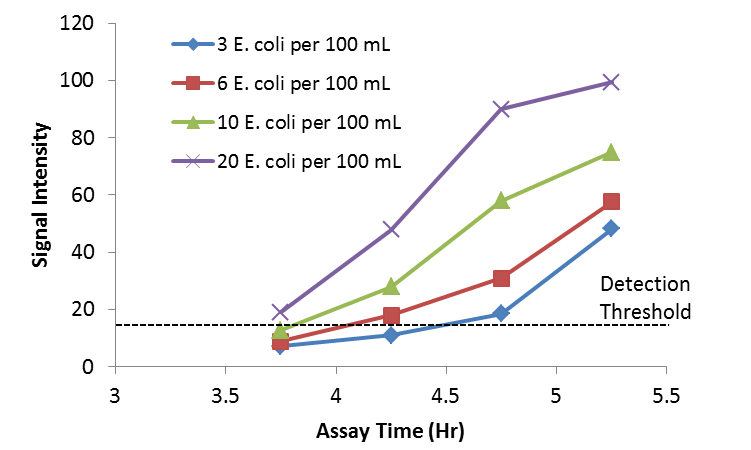Rapid and Advanced Sensors for Water Quality
Christopher Tison, PhD, Research Scientist and Biomedical Technologies Team Lead Nathaniel Talley, Research Associate Biomedical Technologies Group Detection of E. coli is Inefficient and Costly Monitoring water quality is critical for municipal water treatment facilities, environmental testing agencies, and related industries in the civilian and military markets. Driven by increasing environmental regulation and industrial demands, the global water industry is a hundreds of billions of dollars industry. Similarly, “monitoring, control, and analytics” of wastewater treatment comprised approximately 3.0 of the 220 billion dollars in annual capital and operating expenditures for the municipal wastewater industry in 2014. The presence of Escherichia coli (E. coli) is one of the more critical indicators of water quality and is used as a direct indicator of fecal matter presence. However, existing detection methods are costly, time-consuming, require laboratory expertise, and take up to 48 hours to complete. Additionally, many existing techniques to detect E. coli are unable to distinguish between viable (live) bacteria and those that have been damaged or killed during the water treatment process. Luna is therefore developing a small, portable, rapid and easy-to-use assay system known as “E.coREADi™” to detect viable fecal coliforms in wastewater discharge or other water samples. Luna’s solution is based on a streamlined fluorescent detection method in a self-contained syringe and filter device. The assay utilizes E. coli metabolic activity to indicate the presence of viable E. coli.

Luna is Enabling Detection of E. coli with Unique Assay Design Luna’s fecal coliform detection platform is based upon the use of a high surface area filter for capture of bacteria, allowing media and reagents to be rapidly exchanged while bacteria remain trapped. The feasibility of this filter-based approach has been established using both simulated and actual wastewater, and the “all-in-one” format has been developed such that all assay steps occur within the self-contained filter and reaction cartridge, allowing simple automation. Luna’s platform is scalable across samples volumes from 10 mL to 10 L, is specific to E. coli with no false-positives in the presence of non-fecal coliforms, is simple to use, and is highly adaptable for hands-on (low cost) testing or complete automation. Luna has currently demonstrated that a 5 hour total assay time is sufficient for detection of approximately 3 individual E. coli bacteria in a 100 mL sample. This is approximately 19 hours faster than existing qualitative assays and 43 hours faster than the standard quantitative detection methods.

The Future of Wastewater Analysis In addition to the detection of E. coli, Luna is also developing state-of-the-art sensors for the detection of other critical wastewater quality metrics such as biological oxygen demand, or BOD. The BOD is an indicator of the total organic concentration in a water sample as represented by the oxygen required for biological organisms to break down that organic matter. The current standard assay, BOD5, takes five days to complete and requires substantial laboratory space, equipment, and highly trained personnel for testing. Luna is aiming to revolutionize the analysis of BOD by developing unique microbial biosensors that integrate room-temperature stable microbes and oxygen-sensitive thin films to provide near-real-time analysis of a water sample’s total organic matter. To date, Luna has developed benchtop sensors that can accurately monitor the BOD of effluent from a local water treatment facility in less than 30 minutes!

Luna will be presenting its water analysis development efforts next year at the America Water Works Association Annual Conferences in Chicago, IL (June 19 - 22, 2016) and Philadelphia, PA (June 11 - 14, 2017). Come hear about our sensors and discuss this exciting technology with us!